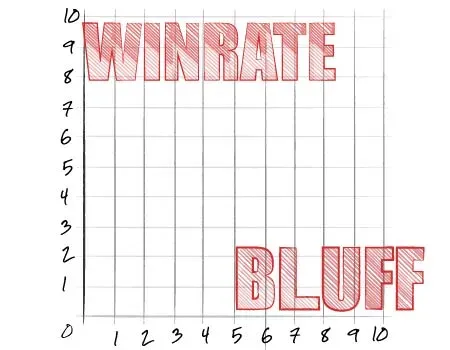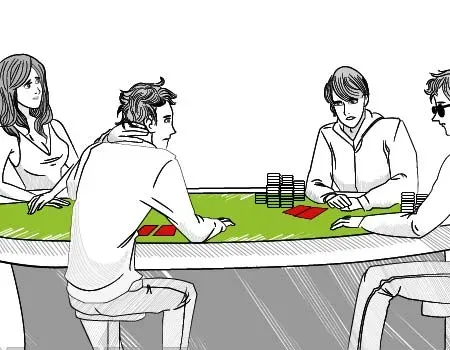HOW TO BLUFF IN POKER
 Bluffing is a thrilling part of the game of poker. While it’s often over exaggerated in terms of frequency and grandeur in movies, that’s nothing to say of the importance it can hold in a poker game to both (1) round out your skillset and (2) increase your win rate and subsequent abilities to win pots you wouldn’t otherwise have won.
Bluffing is a thrilling part of the game of poker. While it’s often over exaggerated in terms of frequency and grandeur in movies, that’s nothing to say of the importance it can hold in a poker game to both (1) round out your skillset and (2) increase your win rate and subsequent abilities to win pots you wouldn’t otherwise have won.
While you can run a poker bluff at any time during the game, there’s many factors and considerations you should take into account (both before the hand even begins as well as during the hand) when learning how to bluff in poker. Executing a well-timed bluff can increase the probability of your opponent folding, and you winning the pot.
STEPS FOR BLUFFING CONCEPTS
- Understand Your Table’s Dynamics
- Understand Your Table Image
- Understand Your Opponents
- Understand How to Read Tells
- Develop a Solid Poker Face
- Tournament or Cash Game
- Start Bluffing
STEPS FOR BLUFFING CONCEPTS
While we will leave those things to consider during a poker hand for later sections of this book, below, we will take a look at more prominent concepts you can take into account before you even are dealt your hole cards.
1. Understand Your Table’s Dynamics: This involves a multitude of concepts varying from stakes to game flow dynamics to number of players there are in a hand, and more.
Stakes: Bluffing becomes more common at higher stakes when players are good enough to make big folds, if the situation calls for it. At the micro and lower stakes games, there are many less experienced players who sometimes can never find the fold button! Follow the simple rule of much less bluffing at smaller stakes, and start to amp it up and while continuing to pick your spots well as you move on up in stakes.
Game Flow Dynamics: Sometimes where players are seated, along with how general gameplay is developing, can greatly influence how you ultimately play your hands. Once time, Gus Hansen mentioned on a commercial all the different poker personalities he had (i.e. Trapping Gus, Bluffing Gus, etc.). Then he continued, “What Gus I’ll be today…is up to you!” What he meant was that you cannot simply arrive to play poker and already have a pre-conceived notion of how you will play; the player type you choose to have and how you ultimately play should be relative to your opponents and how they’re playing during your current session.
Number of Players: The fewer number of players there are seated at a table during a hand, the more you will likely be able to bluff your opponents successfully. The reason for this is that with fewer players, the smaller the chances are that someone will actually have a good hand they can call you with when you bet strong.
Bankroll Management: Having 20 buy-ins for your cash game stake might be a bit more on the aggressive side of bankroll management(BRM). Conversely, having 100 buy-ins instead is a much more conservative approach. Regardless of the approach, you should always ensure that you’re always able to be at ease whenever you bluff and not overly worried the negative implications an incorrect bluff (or call) or lost pot could have on your bankroll.
2. Understand Your Table Image: Let’s say you bluff once or twice in a row and get called. People now know that you have the ability to bluff and be a bit reckless, and that you may bluff more in the future. In times like these, it’s inadvisable to continue attempting bluffs because your opponents will likely to call you down weaker because they’ve seen what you’re capable of. On the other hand, if you’ve been playing snug and tight and have not shown down any bluffs you may have made, you have a tighter table image that will, hopefully, garner the respect of your opponents when you try to bluff in future hand

|
|

|
|
- Start Bluffing: Once you’ve mastered the basics and have solidified your preparation steps and considerations, it’s time to start bluffing! Some major concepts you must keep in mind are (1) picking the right time to bluff; (2) telling a believable story with your betting; and (3) keeping in mind what your opponent may have. We will continue to elaborate on strategic concepts you should use during a bluff in other sections of this book!
In the next chapter, we shall take an in-depth look at bluffing strategically and all the in-hand concepts you should be considering before attempting a bluff.
We’ll also answer some frequently asked questions many people have regarding bluffs, as well.
